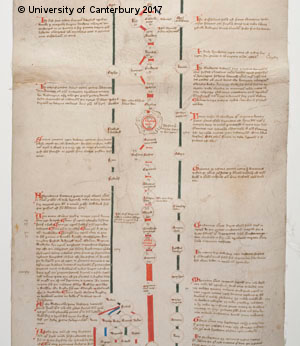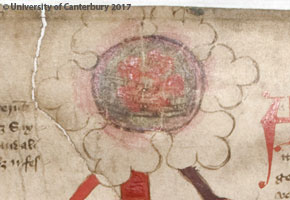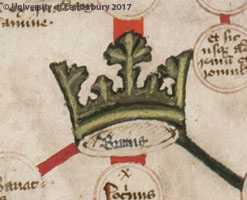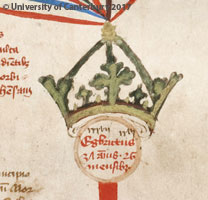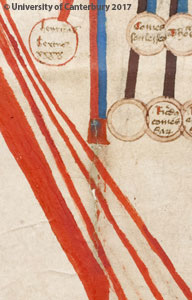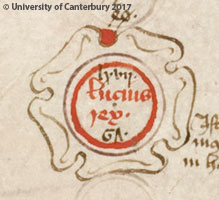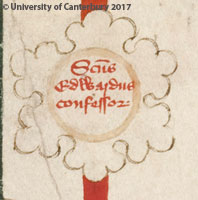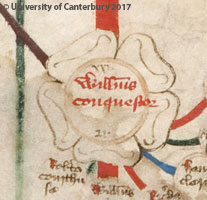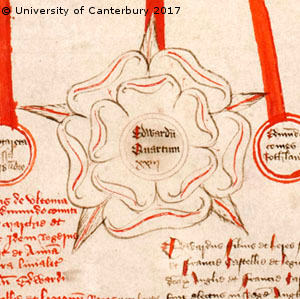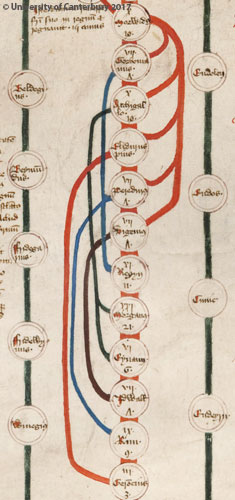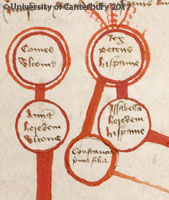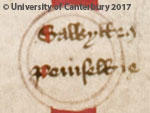Brutus is unique in that he is the only ruler to appear on the central axis whose name is written in blue–grey. The Lancastrian Scribe used red ink to label Egbert, as he did in other cases where he attributed particular significance to a ruler.
While Brutus' crown is open and resembles the "traditional" form associated with English rulers, Egbert's is much more striking. The closed form strongly resembles the type of crown worn by contemporary rulers of the Holy Roman Empire. A trend towards associating English kingship with imperial iconography began under the first Lancastrian king, Henry IV. It may have been given added impetus by a visit to England by the contemporary claimant to the imperial throne, the Roman and Hungarian king Sigismund. That visit took place in 1416, and was therefore relatively recent at the time of the Roll's original drafting.
It is possible that the sparse use of illumination was the result of an intentional decision: when the Roll is viewed fully unrolled, the two crowns – and potentially the missing "H" – act as "marker points" that tell a cyclical story of foundation, disunity, and re-unification. In particular, the Lancastrian Scribe may have intended viewers draw a parallel between the reunification of England under Egbert and the reign of the third Lancastrian king. If so, it was a profoundly optimistic vision, albeit one quickly dashed by the reality of Henry VI's reign.

